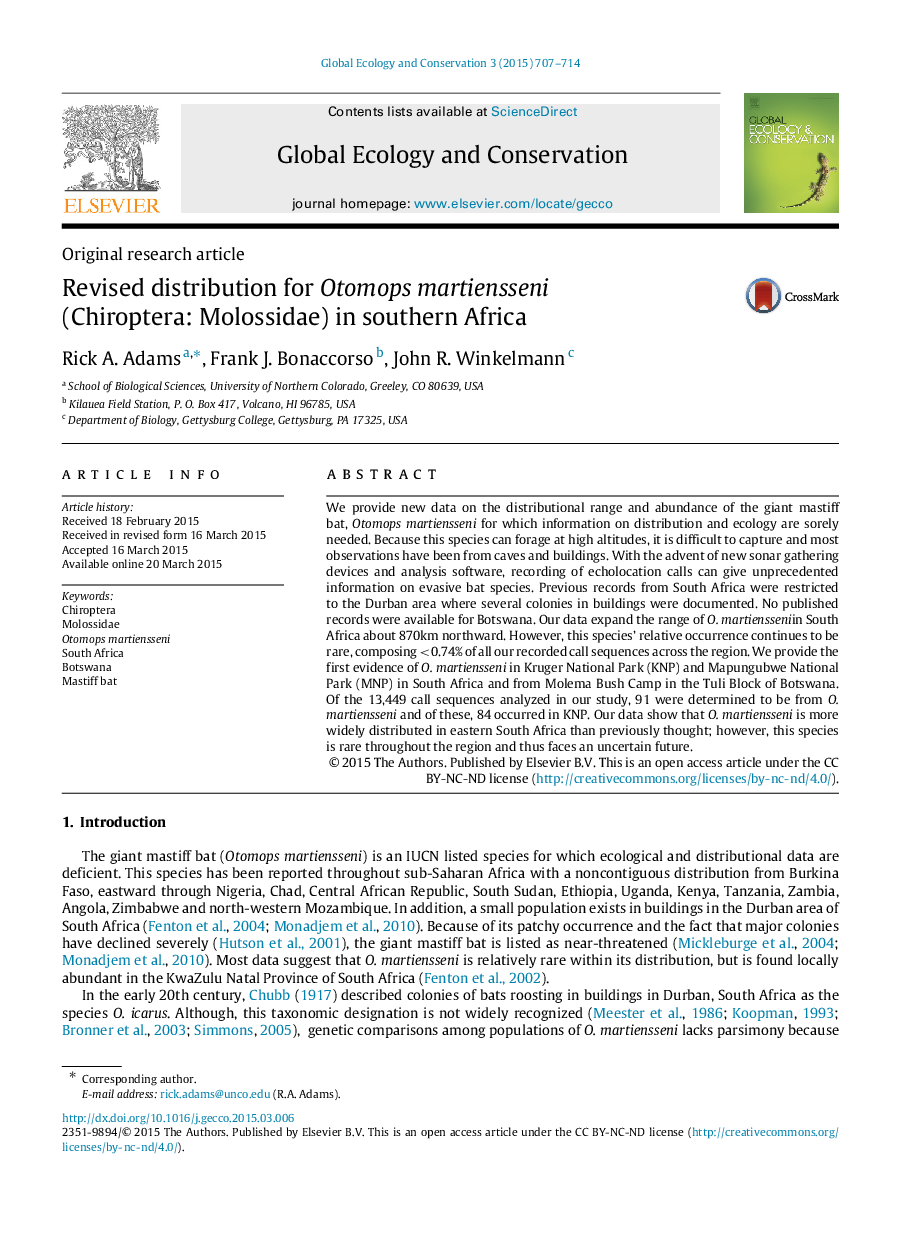| Article ID | Journal | Published Year | Pages | File Type |
|---|---|---|---|---|
| 4379598 | Global Ecology and Conservation | 2015 | 8 Pages |
Abstract
We provide new data on the distributional range and abundance of the giant mastiff bat, Otomops martiensseni for which information on distribution and ecology are sorely needed. Because this species can forage at high altitudes, it is difficult to capture and most observations have been from caves and buildings. With the advent of new sonar gathering devices and analysis software, recording of echolocation calls can give unprecedented information on evasive bat species. Previous records from South Africa were restricted to the Durban area where several colonies in buildings were documented. No published records were available for Botswana. Our data expand the range of O. martiensseniin South Africa about 870km northward. However, this species' relative occurrence continues to be rare, composing <0.74% of all our recorded call sequences across the region. We provide the first evidence of O. martiensseni in Kruger National Park (KNP) and Mapungubwe National Park (MNP) in South Africa and from Molema Bush Camp in the Tuli Block of Botswana. Of the 13,449 call sequences analyzed in our study, 91 were determined to be from O. martiensseni and of these, 84 occurred in KNP. Our data show that O. martiensseni is more widely distributed in eastern South Africa than previously thought; however, this species is rare throughout the region and thus faces an uncertain future.
Keywords
Related Topics
Life Sciences
Agricultural and Biological Sciences
Ecology, Evolution, Behavior and Systematics
Authors
Rick A. Adams, Frank J. Bonaccorso, John R. Winkelmann,
